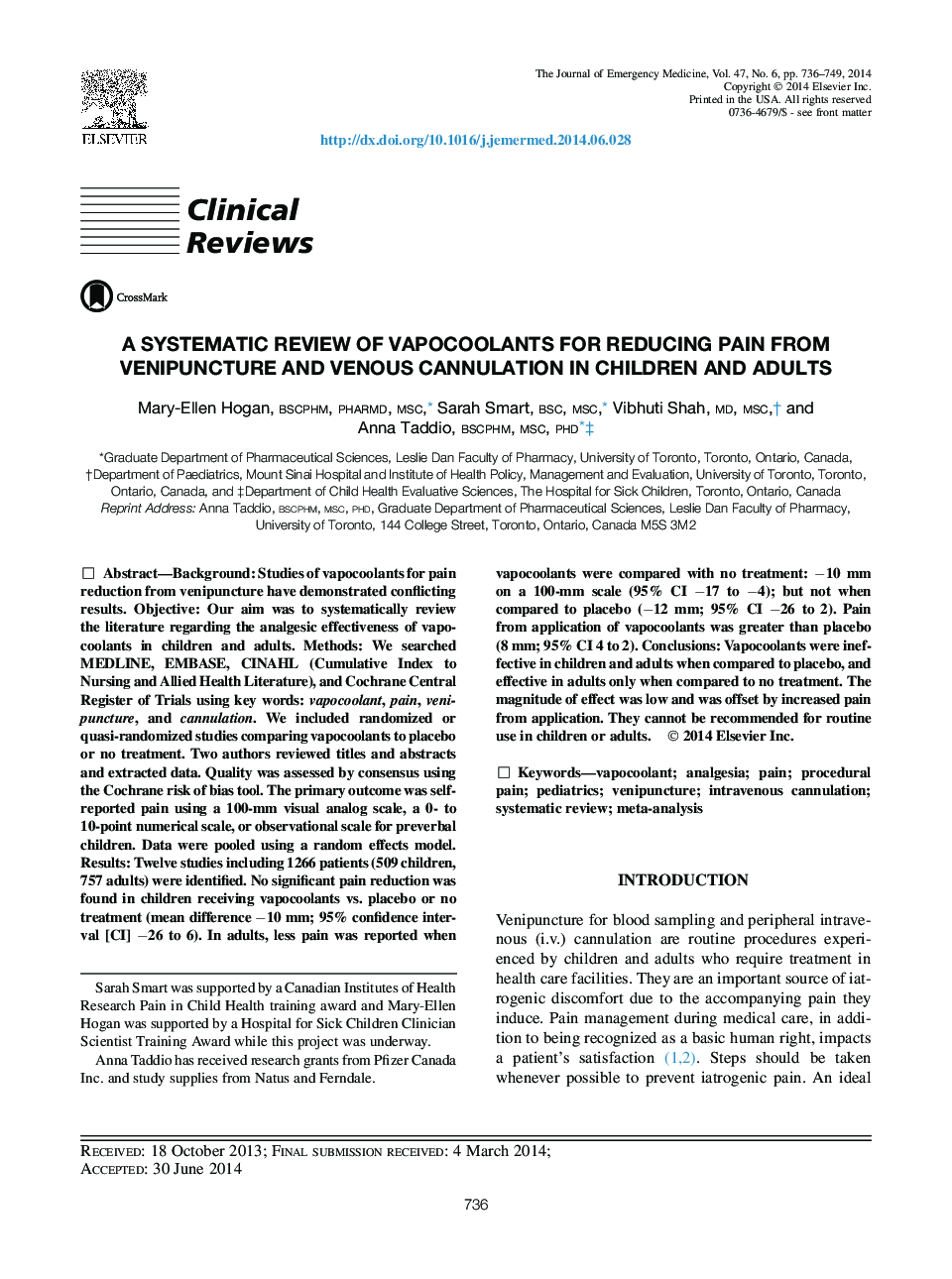| Article ID | Journal | Published Year | Pages | File Type |
|---|---|---|---|---|
| 3246040 | The Journal of Emergency Medicine | 2014 | 14 Pages |
BackgroundStudies of vapocoolants for pain reduction from venipuncture have demonstrated conflicting results.ObjectiveOur aim was to systematically review the literature regarding the analgesic effectiveness of vapocoolants in children and adults.MethodsWe searched MEDLINE, EMBASE, CINAHL (Cumulative Index to Nursing and Allied Health Literature), and Cochrane Central Register of Trials using key words: vapocoolant, pain, venipuncture, and cannulation. We included randomized or quasi-randomized studies comparing vapocoolants to placebo or no treatment. Two authors reviewed titles and abstracts and extracted data. Quality was assessed by consensus using the Cochrane risk of bias tool. The primary outcome was self-reported pain using a 100-mm visual analog scale, a 0- to 10-point numerical scale, or observational scale for preverbal children. Data were pooled using a random effects model.ResultsTwelve studies including 1266 patients (509 children, 757 adults) were identified. No significant pain reduction was found in children receiving vapocoolants vs. placebo or no treatment (mean difference −10 mm; 95% confidence interval [CI] −26 to 6). In adults, less pain was reported when vapocoolants were compared with no treatment: −10 mm on a 100-mm scale (95% CI −17 to −4); but not when compared to placebo (−12 mm; 95% CI −26 to 2). Pain from application of vapocoolants was greater than placebo (8 mm; 95% CI 4 to 2).ConclusionsVapocoolants were ineffective in children and adults when compared to placebo, and effective in adults only when compared to no treatment. The magnitude of effect was low and was offset by increased pain from application. They cannot be recommended for routine use in children or adults.
